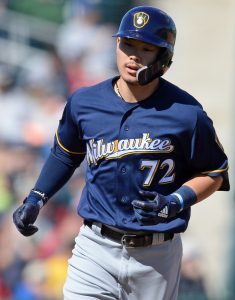In something of a surprise move, the Brewers announced today that they have reinstated Jimmy Nelson from the injured list and optioned him to Triple-A. He is finally back to health after a long layoff but won’t come straight up to the majors.
It seems that Nelson wasn’t deemed quite ready for the MLB rotation. It could be that the team also prefers to option him to maintain roster flexibility, though it’s tough to imagine they’d hold him down if he looked to be in top form. Nelson allowed ten earned in 19 rehab frames at Triple-A, posting a 22:9 K/BB ratio.
There had been some suggestion that Nelson could be brought back in a relief capacity if the club decided not to plug him in as a starter. Instead, he’ll keep working at the club’s top affiliate — presumably as a starter, though that’s not yet clear.
It’s surely a tough pill to swallow for the soon-to-be-30-year-old pitcher, who was closing in on a return to the big leagues after missing all of 2018 following labrum surgery. Before his injury, he had turned in a breakout 2017 effort, with 175 1/3 innings of 3.49 ERA ball on the back of 10.2 K/9 and 2.5 BB/9.
Nelson entered the present season with 4.107 years of MLB service and has accrued 57 days this year while working back. That leaves him shy of topping five full years of service, which occurs at 172 days, though he’ll pass that bar rather quickly if and when he is called up.
That’s not to suggest that the Brewers are acting with service-time motivations. The club spent $3.7MM last year and this year to retain the rights to Nelson and would surely prefer to see that investment turn into MLB results.

